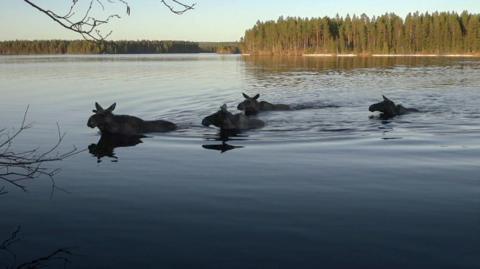Cait Borjesson, 60, who has been hooked to the annual livestream since she stumbled upon it during the Covid-19 pandemic, said her TV had been on for 16 straight hours since it began on Tuesday.
"It's unbelievably relaxing," she said. "There's the natural sounds of the birds, the wind, the trees. It gives you a sense that you're in nature even if you're not".
For Cait, watching the migration has become a yearly tradition, so much so that she books time off work to fully immerse herself in the three-week broadcast.
She said the stream was "like therapy" which had helped her anxiety and panic attacks.
And she is not alone. SVT's livestream has a wide audience, including a Facebook group boasting more than 77,000 members who come together to share their memorable moments, emotional reactions to the broadcast and their shared fascination of the migration.
A major part of their journey captured by SVT is through the village of Kullberg in northern Sweden, next to the Angerman. The animals are known as moose in North America, and elk in Europe.
Goran Ericsson, dean of the faculty of forest sciences at the Swedish University of Agricultural Sciences and science advisor for the broadcast, said the elk migrate back to the summer ranges after aggregating in spots with better temperatures in the winter.
"Historically, this migration has been going on since the ice age," he said. "During spring and summer, moose are more evenly spread out in the landscape."
